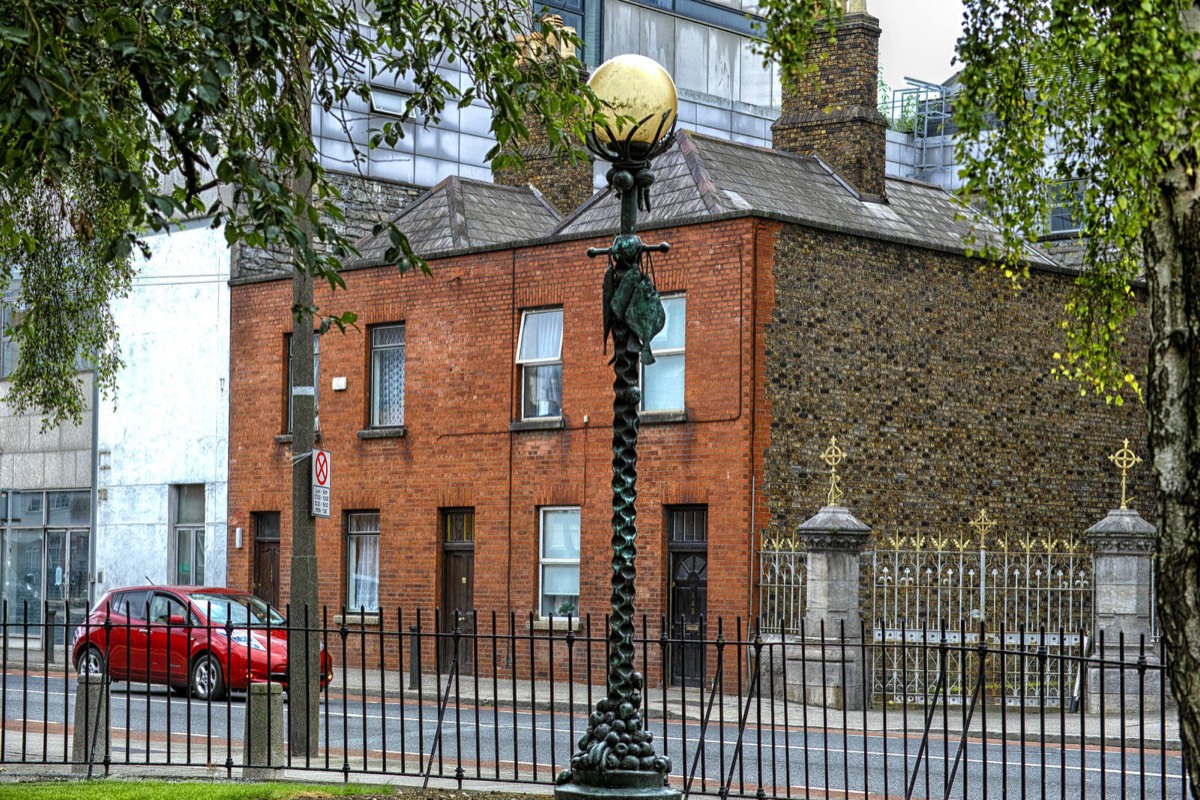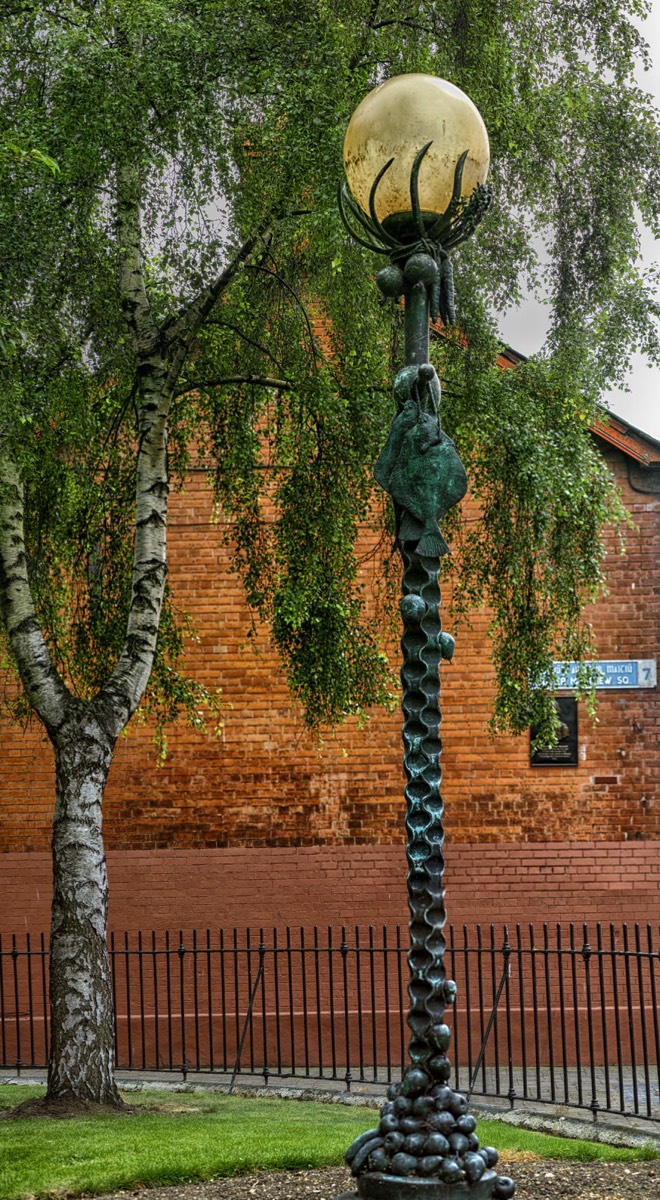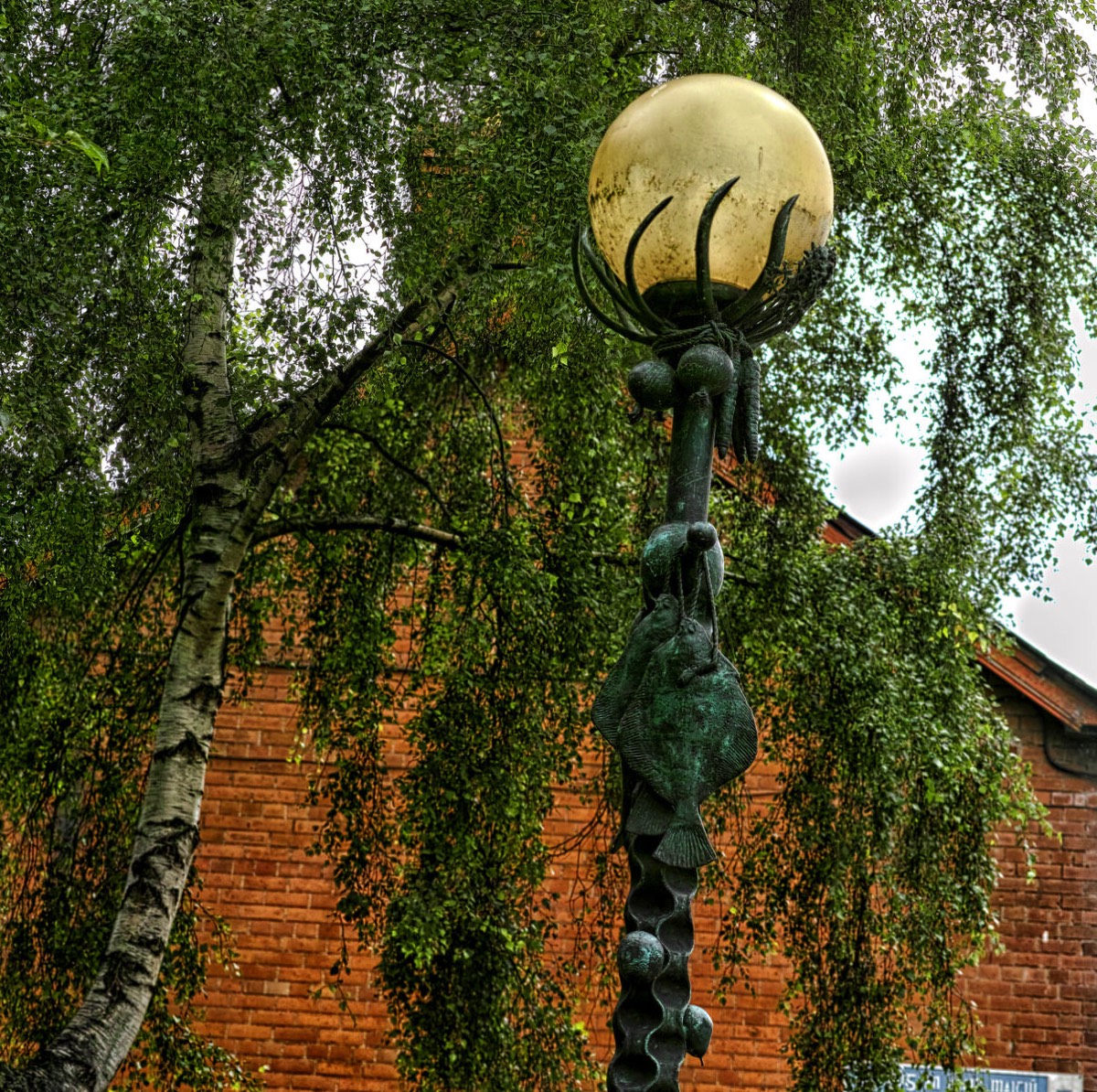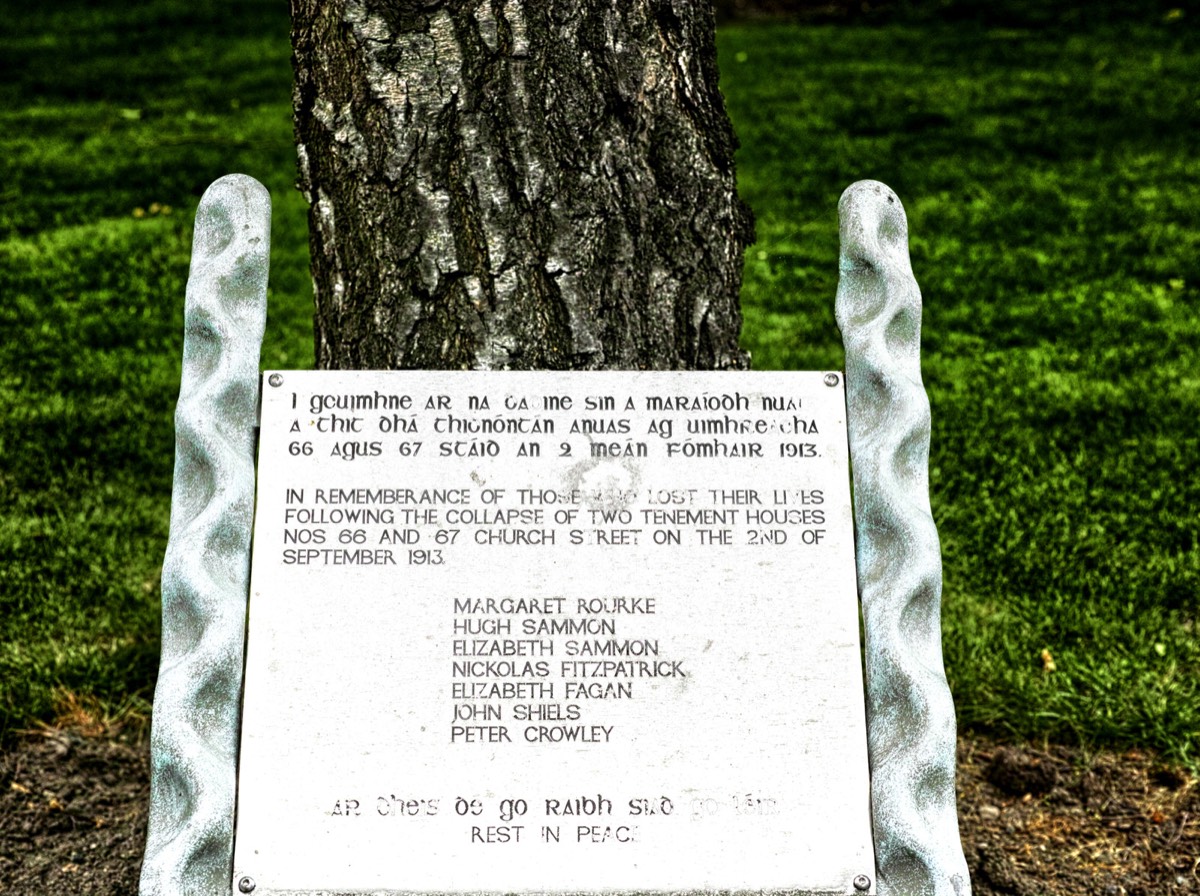CHURCH STREET DISASTER MEMORIAL
CHURCH STREET DISASTER MEMORIAL - FATHER MATTHEW SQUARE ON CHURCH STREET
I suspect the few Dubliners are aware of what happened on Church Street in September 1913.
There is a little park in Church Street at Father Matthew Square which contains a plaque with details of "The Church Street Tenement Collapse" as well as an attractive monumental street-lamp.
Father Mathew Square is a housing scheme for Dublin Corporation by the City Architect on site bounded by Church St, Beresford St, Mary’s La & N King St consisting of 4-roomed houses, 3-roomed houses and 2-roomed houses. Tenders invited, Dec 1914. Work started in August 1915.
Tuesday 2 September 1913. At about 8.45pm two houses, Nos 66 and 67, collapsed. The rubble fell across the width of the street as far as the door of the Father Matthew Hall on the other side.
Later evidence to the coroner’s inquiry stated that there had been a rumbling noise, after which No. 66 collapsed suddenly, followed soon afterwards by the fall of No. 67. All seven who died in the tragedy had lived in No. 66, a four-storey building in which 26 people had lived. One of the inhabitants, Mr Sammon, who survived the collapse, told reporters the heroic story of how his son Eugene had died: ‘Eugene took the youngest child (Josephine), aged one year and eight months, and brought her out safely. Then he went back for the other children, and got out with them alright, but it was when he was coming away with Elizabeth that they were struck by the falling masonry and killed’.
Hugh Salmon worked at Jacob’s biscuit factory and was a member of the Irish Transport and General Workers’ and it should be noted The Church Street Disaster happened only days after some of the worst disturbances of the labour strikes of 1913, which saw the deaths of two men during a baton charge by the Dublin Metropolitan Police.
It appears that the chimney gave way, crashing through the house as it fell and pushing the front wall out into the street. Immediately following the collapse of the two houses, a great cloud of dust enveloped the scene, and for some time it was not possible to see the magnitude of what had just occurred. Soon units of Dublin Fire Brigade arrived at the scene and took control of the rescue work. By now the street was dark, except for some dim street lamps. Numerous lighted lanterns and candles were held aloft by a body of willing assistants. Throughout the night rescue workers pulled the bodies of the injured and dead from the rubble. The next morning the sun shone brightly, and only then could the full magnitude of the damage be appreciated.
Fifteen people were trapped in the rubble: six died, and at least seven were seriously injured.
Those killed were Hugh Sammon (17), Elizabeth Sammon (4½), Nicholas Fitzpatrick (40), Elizabeth Fagan (50), John Shiels (3), Peter Crowley (6) and Margaret Rourke (55).
An inquest held into the collapse revealed that the Dangerous Buildings Inspector had examined the houses at the beginning of August, and ordered that immediate renovation work be carried out. In a follow-up visit on 15 August, the Inspector passed the buildings as safe, although he admitted to the Coroner's Court that he could not see whether a new supporting beam had been fitted because it was blocked at the time. The Church Street disaster was not the first time tenements had collapsed, but the numbers killed and injured were unparalleled.
I suspect the few Dubliners are aware of what happened on Church Street in September 1913.
There is a little park in Church Street at Father Matthew Square which contains a plaque with details of "The Church Street Tenement Collapse" as well as an attractive monumental street-lamp.
Father Mathew Square is a housing scheme for Dublin Corporation by the City Architect on site bounded by Church St, Beresford St, Mary’s La & N King St consisting of 4-roomed houses, 3-roomed houses and 2-roomed houses. Tenders invited, Dec 1914. Work started in August 1915.
Tuesday 2 September 1913. At about 8.45pm two houses, Nos 66 and 67, collapsed. The rubble fell across the width of the street as far as the door of the Father Matthew Hall on the other side.
Later evidence to the coroner’s inquiry stated that there had been a rumbling noise, after which No. 66 collapsed suddenly, followed soon afterwards by the fall of No. 67. All seven who died in the tragedy had lived in No. 66, a four-storey building in which 26 people had lived. One of the inhabitants, Mr Sammon, who survived the collapse, told reporters the heroic story of how his son Eugene had died: ‘Eugene took the youngest child (Josephine), aged one year and eight months, and brought her out safely. Then he went back for the other children, and got out with them alright, but it was when he was coming away with Elizabeth that they were struck by the falling masonry and killed’.
Hugh Salmon worked at Jacob’s biscuit factory and was a member of the Irish Transport and General Workers’ and it should be noted The Church Street Disaster happened only days after some of the worst disturbances of the labour strikes of 1913, which saw the deaths of two men during a baton charge by the Dublin Metropolitan Police.
It appears that the chimney gave way, crashing through the house as it fell and pushing the front wall out into the street. Immediately following the collapse of the two houses, a great cloud of dust enveloped the scene, and for some time it was not possible to see the magnitude of what had just occurred. Soon units of Dublin Fire Brigade arrived at the scene and took control of the rescue work. By now the street was dark, except for some dim street lamps. Numerous lighted lanterns and candles were held aloft by a body of willing assistants. Throughout the night rescue workers pulled the bodies of the injured and dead from the rubble. The next morning the sun shone brightly, and only then could the full magnitude of the damage be appreciated.
Fifteen people were trapped in the rubble: six died, and at least seven were seriously injured.
Those killed were Hugh Sammon (17), Elizabeth Sammon (4½), Nicholas Fitzpatrick (40), Elizabeth Fagan (50), John Shiels (3), Peter Crowley (6) and Margaret Rourke (55).
An inquest held into the collapse revealed that the Dangerous Buildings Inspector had examined the houses at the beginning of August, and ordered that immediate renovation work be carried out. In a follow-up visit on 15 August, the Inspector passed the buildings as safe, although he admitted to the Coroner's Court that he could not see whether a new supporting beam had been fitted because it was blocked at the time. The Church Street disaster was not the first time tenements had collapsed, but the numbers killed and injured were unparalleled.




As an Amazon Associate I earn from qualifying purchases
You will find links to buy products from Amazon, Google and other partners. If you click on these links, you’ll find that the URL includes a small extra piece of text which identifies that the click came from my websites. This text is an affiliate code, and it means that I get a small percentage of the money you spend if you choose to buy that product, or, in some cases, other products from the site soon after. These affiliate links help pay the costs of producing my websites and ensure that the content is free to you.